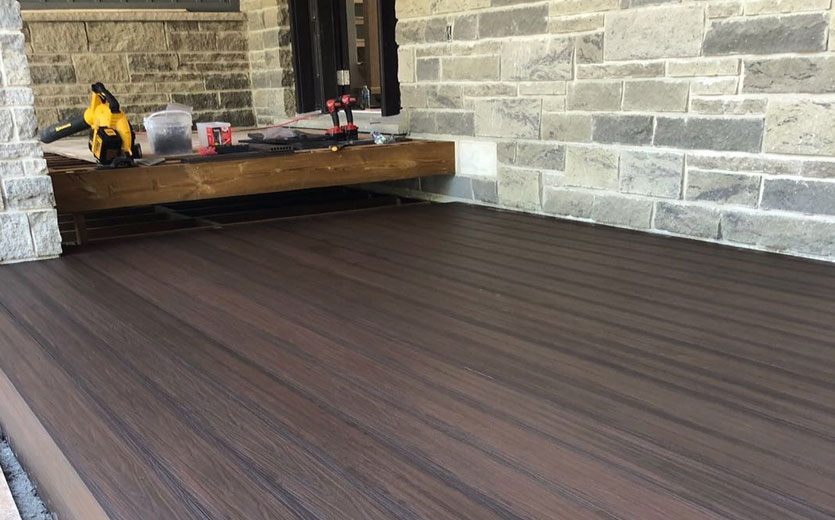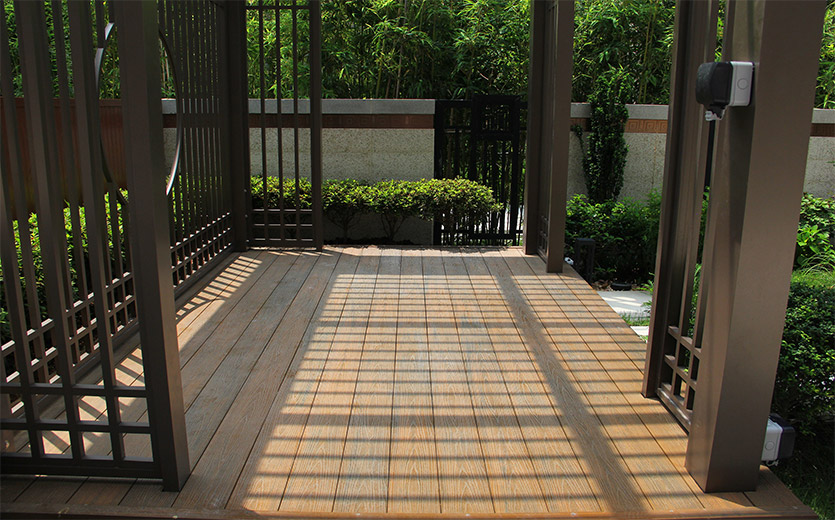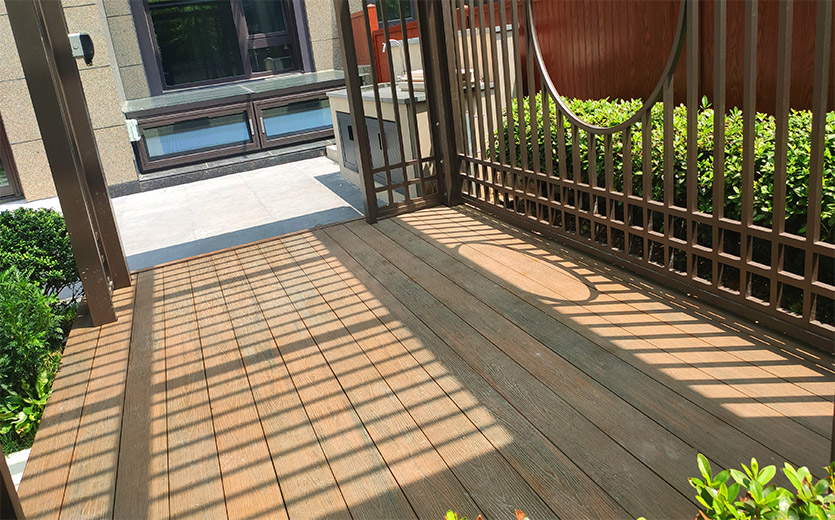
In recent years, composite decking has become increasingly popular because it offers more benefits than traditional decking. It is durable and has lower maintenance and is also effective in preventing rot, cracking, and insect damage. But composite decking is not completely immune to damage, and over time, it can also develop scratches and scuffs. But why does this happen? What can be done to prevent this from happening?
Why does composite decking get scuffs and scratches?
There are many reasons why composite decking may get scratched. The most common ones include furniture movement, heavy traffic, cleaning products, and improper installation.
Furniture movement and foot traffic
Furniture can be a major cause of scratches on composite decking. This is especially true if your furniture is moved around a lot. Chairs, tables, and other heavier furniture can leave more scratches on the surface of the deck. As you use them, these scratches will become more and more visible and numerous.
Composite decking is durable, but much foot traffic can also cause wear and tear on the deck. Harder soles as well as high heels may cause some minor scratches.
Cleaning Products
Regular cleaning of the deck will keep the composite decking looking good. But if you use incorrect cleaning products, it can cause a lot of damage to the surface of the deck. Some cleaners that contain chemicals, such as bleach, can cause discoloration and damage to the deck’s surface. And some sharp cleaning brushes can cause irreversible damage to the deck.

Incorrect installation method
Correct installation can be an important factor in ensuring composite decking will last for a long time and make composite decking more durable. However, if you use the incorrect installation method, it can lead to deformation, bending and even cracking of the decking. If there is a large spacing between the joists, the deck can easily sag. This can lead to friction between the decking and a lot of scratches. Also if composite decking is installed too close to the ground, there is a risk of moisture damage, which can lead to warping or scratching of the deck.
How to repair damaged composite decking
Taking care of discolored decking
The outdoor deck may fade after exposure to sunlight. Sanding composite materials is not an option. Under extreme friction, plastic burns, and melts. So the discoloration problem may deteriorate rather than improve.
Additionally, paints are not suggested since they frequently stick poorly to composite materials. Stains, on the other hand, will recolor the composite decking. However, the color may change from the hue on the container. Prior to devoting time and resources to staining the outdoor decking board. Additionally, stain samples were on inconspicuous areas of the decking board.
Regular cleaning
Regular cleaning can be effective in preventing scratches on composite decking. Many homeowners don’t care about dirt and debris on their decks, but they can cause wear and tear on the deck. Dirt and debris can linger in small scratches and scuff marks, causing them to become more visible over time. Regularly sweeping your deck with a broom can reduce a lot of grime and debris.

To remove stubborn grime, you might use an appropriate degreaser. The process of cleaning differs according to the manufacturer and product line. Certain composite decking materials cannot be cleaned with an electric washer. Others advocate a pressure of between 1,500 and 3,000 pounds per square inch.
Filler can be used to repair damage to the ornamental board.
If there are chips or small cracks in the boards of your WPC decking. You can fix them-it with a composite deck repair kit. And depending on the material and manufacturer of your composite boards. Typically, these repair kits contain wax or epoxy-based fillers.
Additionally, it can be used to repair damaged wood panels, such as wood putty. Ensure that the damaged composite board is clean. Then apply the filler according to the instructions included with the kit. After that, using a putty knife, smooth the application and give the mended board a more uniform appearance.
Repair scratched composite decking
As with wooden decks, composite surfaces are susceptible to scratches and banging as a result of outdoor furniture movement. The answer differs according to the manufacturer and the type of goods. Certain individuals advise against the usage of scratches and scrapes. And claiming that they will eventually blend in with the rest of the board.
Other manufacturers claim that soldering irons can be used to combine flaws and make them disappear. In this scenario, understanding the product and the manufacturer can assist in determining the scratch repair technique.
Restore more severe harm
It may be necessary to replace the severely damaged composite decking. Such as deep scratches, damaged decking boards, and deep scratches.

Locate the fasteners—some are concealed beneath the floor to conceal the screw heads—and release them before replacing the entire board. Replacement is always a possibility if the item cannot be repaired to your satisfaction, even if it is mildly damaged.
Conclusion
Although composite decking is known for its durability, it is not completely immune to damage. Daily use, cleaning of the product, and improper installation methods can cause scratches and scuffs. Regularly sweeping, priming, repairing, and replacing your deck can keep your deck healthier. By following these simple tips, you can keep your composite decking looking great for years to come.




Post a Comment